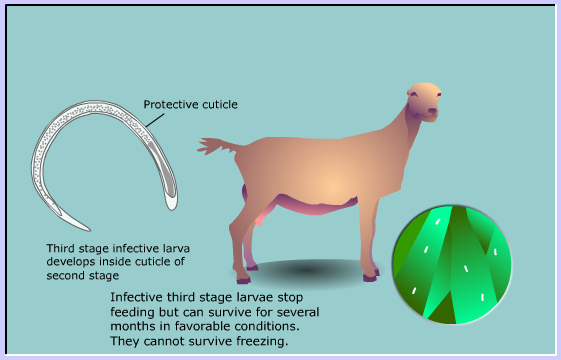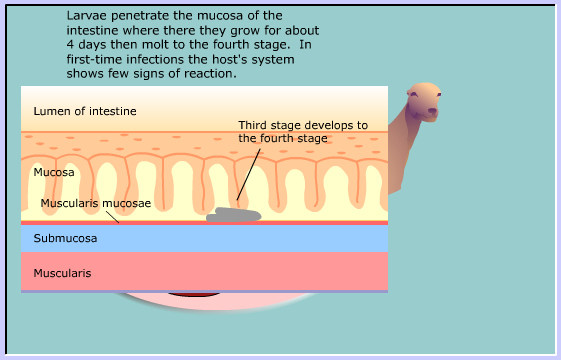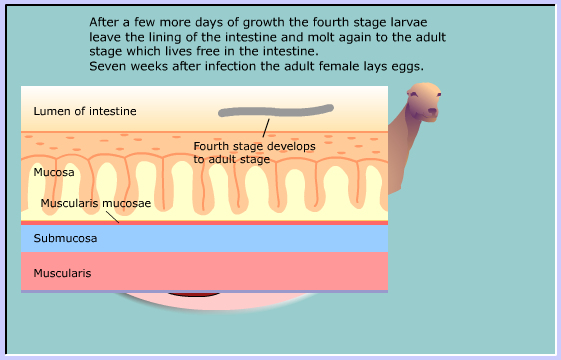The Biology of the Goat
Oesophagostomum columbianum
Nodule Worm
The adult nodule worm lives in the large and small intestine of goats and sheep.
male 12 - 17 mm long
female 15-21 mm long

The thin shelled eggs are in the 8 to 16 cell stage when passed out with the feces.

First stage larvae hatch 15 to 20 hours later in warm, moist conditions.

The larvae feed for about 24 hours, shed the cuticle and molt to the second stage.
The first and second stage are not resistant to drying.

Second stage larvae feed for three days.
Then the third stage develops inside the cuticle of the second stage.

Infective third stage larvae stop feeding but can survive for several months in favorable conditions.
They cannot survive freezing.

Infective larvae are swallowed on contaminated feed, shed the protective cuticle in the abomasum,
then migrate to the intestine.

Larvae penetrate the mucosa of the intestine where there they grow for about 4 days
then molt to the fourth stage.
In first time infections the host's system shows few signs of reaction.

After a few more days of growth the fourth stage larvae leave the lining of the intestine
and molt again to the adult stage which lives free in the intestine.
Seven weeks after infection the adult female lays eggs.

In some cases, such as second time infections, the immune system reacts to the larvae causing
inflammation and encapsulation of the worm in nodules which become
infected with cheesy tissue (caseation).
The lining of the colon is covered with nodules (called pimply gut)

After a few months, the nodule calcifies and the worm either dies or if it leaves the nodule
it wanders through the intestinal muscle fibers leaving tunnels and tracts causing
damage to the intestine.
Oocyte: thin-shelled, 80 µm long by 40 µm wide
At 8 to 16 cell - stage when passed with feces
Clinical Signs
Nodule formation in both the small and large intestine interfers with aborption of nutrients,
digestion and bowel movements.
The nodules can become infected causing peritonitis and inflammation.
In young animals signs include severe diarrhea that is dark green in color with
mucous and blood starting the sixth day after infection
(when the larva leave the lining or nodules).
The animal has a humped back, stiff hind legs, becomes emaciated then dies.
